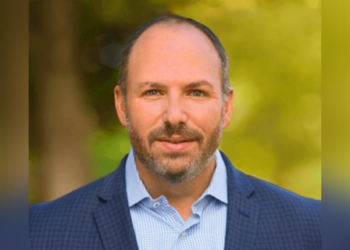Although not always legally required, having professional liability insurance is essential for many businesses, especially for those that provide expert or advisory services.
Customer satisfaction is vital to the success of any business. However, mistakes do happen and having unhappy clients can cost a company greatly, particularly if those clients decide to sue.
This is where professional liability coverage comes into play. Also known as errors and omissions (E&O) insurance, this type of policy protects businesses against claims of financial losses resulting from alleged or actual negligence during the fulfillment of a professional service. It covers legal and settlement costs arising from service-related mistakes and oversights, breach of contract, unfinished work, and budget overruns, among others. Read more: Professional liability head: “We’re deep in the championship rounds in this heavyweight fight” Who needs professional liability insurance? Any individual or business that offers professional services or advice to clients should take out professional liability coverage. The list includes: Accountants Architects Consultants Engineers Financial advisors Graphic designers Information technology (IT) specialists Insurance professionals Legal professionals Medical practitioners Real estate professionals Software developers Stylists Tradespeople Wedding planners When is professional liability coverage required? Businesses in certain industries are required, either by law or industry standards, to take out professional liability insurance. Some clients may also require a professional or a company to have this type of coverage in place before agreeing to do business. These are some of the professions where coverage is necessary: Medical practitioners Medical professionals, including physicians, nurses, dentists, psychologists, physical therapists, and other healthcare providers, are required by law to carry medical malpractice insurance. This type of professional liability insurance protects them against claims of negligence resulting in a patient’s injury or death. Lawyers Currently, legal malpractice insurance is mandatory only in two states – Idaho and Oregon. Nearly half of all US states, however, have adopted some form of disclosure rules requiring lawyers to notify clients whether or not they carry coverage. Read more: Professional liability risks pile up during the pandemic Real estate professionals Taking out errors and omissions insurance is compulsory in several states, including Colorado, Idaho, Iowa, Kentucky, Mississippi, Nebraska, New Mexico, North Dakota, Rhode Island, South Dakota, and Tennessee. Requirements, however, vary between states. In Colorado and Nebraska, for instance, real estate agents are required to get a policy with a minimum annual aggregate limit of $300,000. In Iowa and Mississippi, meanwhile, the minimum limit is $100,000. Insurance agents Several states also require insurance agents to carry errors and omissions coverage. Similar to those for real estate professionals, each state has a different set of requirements. In Rhode Island, agents and brokers need to have coverage with a minimum aggregate policy limit of $500,000. In Tennessee, the minimum limit is $100,000. Government contractors Under the Federal Acquisitions Regulations, businesses working on government projects are required to carry professional liability insurance to protect them from “the perils to which the contractor is exposed.” These businesses include: Construction firms Professional services providers, including financial and public relations firms IT specialists, including consultants and cybersecurity experts Transportation and logistics services providers Pharmaceutical and healthcare services providers What is excluded from professional liability coverage? Professional liability policies do not cover legal or medical expenses resulting from bodily injury or property damage that customers suffer while a service is being provided, which are covered by general liability insurance. Lawsuits filed by employees due to accusations of wrongful termination or workplace harassment are likewise not covered by professional liability insurance. For these, businesses need to take out employment practices liability coverage. How much does professional liability insurance cost? Several factors impact the premium prices of professional liability coverage. These include: The industry and the risks associated with it Where the business is located Coverage limits and deductibles Years of operation Number of employees Past claims According to Insureon’s data, the median cost of professional liability premiums is $59 per month or about $713 annually. The firm adds that more than half of its small business clients allocate between $500 and $1,000 each year for errors and omissions coverage. About a fifth spend less than $500. Read more: What is key in tightening A&E professional liability market? How does professional liability insurance protect businesses? Different businesses also get varying levels of protection from professional liability insurance. Here are the types of coverage this policy provides for different professions. Service provider What insurance typically covers Accountants Legal and settlement costs resulting from bookkeeping errors, missed items on a client’s tax return, failure to submit a client’s tax return on time, accusations of professional negligence, and other professional mistakes Architects and engineers Legal and settlement costs resulting from advice and design errors and oversight, breach of contract, and allegations of negligence Financial consultants and investment managers Lawsuits resulting from miscalculation and poor advice on stocks, mutual funds, and other investments leading to financial losses for the client Insurance agents and brokers Legal defense and settlement costs stemming from claims of poor advice on insurance coverages and policies Lawyers Lawsuits arising from mistakes made when providing legal services to a client, breach of contract or professional services, and allegations of misrepresentation Medical professionals Claims of negligence resulting in a patient’s injury or death Real estate agents and brokers Claims arising from incorrectly describing a property in a listing – including not disclosing structural flaws – and failure to execute fiduciary duties to clients Tradespeople (carpenters, electricians, painters, plumbers, and heating and air conditioning technicians) Expenses incurred to repair or redo a trade contractor’s faulty work, and any legal costs incurred from lawsuits, settlements, and damages resulting from these errors









